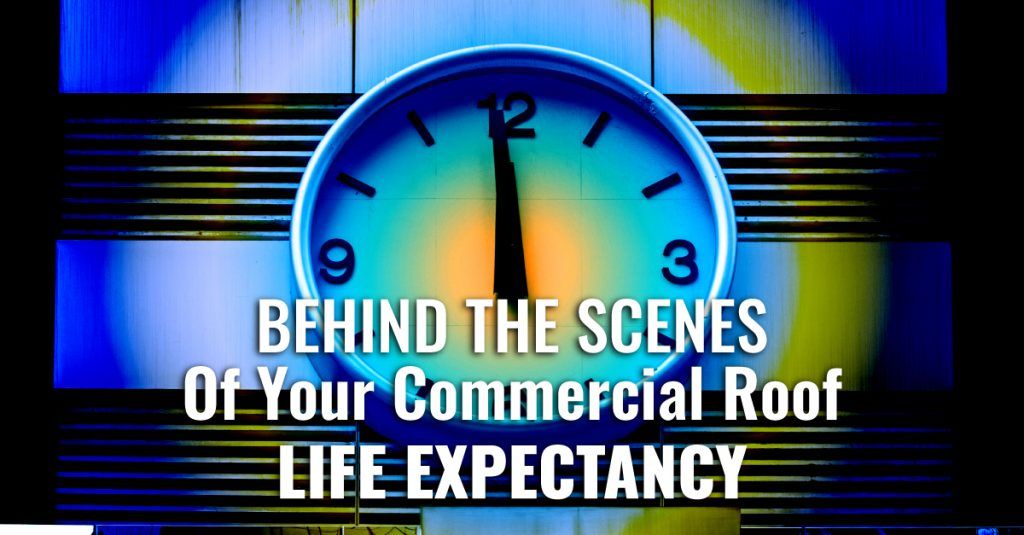
Although flat roofing systems are not entirely flat they hold snow and water much longer than steeply sloped roofs. Flat roofs, therefore, need different materials to stay watertight. Roofing materials designed for flat commercial roofs have continuous or monolithic surfaces which can hold standing water for a limited time.
Do you need a new commercial roof? This guide highlights four common flat roof materials and their expected lifespans to help you make an informed decision.
1. Membrane (Single-Ply) Roofing
The most common membrane roofing systems are plastic and rubber formulations. EPDM (ethylene propylene diene monomer) is a strong and long-lasting synthetic rubber sheet material.
These single-ply roofing systems have a life expectancy of about 25 to 40 years, which is perfectly in line with the service life of most commercial buildings. EPDM membranes can be loose-laid and adhered in place with ballast, such as masonry pavers or river rock. Alternatively, it can be glued or fastened to the insulation layer.
Pros:
- Repairs are simple and inexpensive
- Lightweight
- Can retain heat and lower heating bills
Cons:
- Roof penetrations make installation more difficult and costly
- Falling tree branches or heavy foot traffic can puncture the membranes
- Seams between membrane sheets are common areas for leaks
2. Built-Up Roofing (BUR)
BUR consists of several layers, including a bottom layer or two insulation boards, multiple intermediate layers of asphalt or tar with layers of felt, and a layer of gravel. This results in a tough, thick, and seamless roof assembly which resists damage.
BUR roofs typically last about 20 to 30 years. However, regular inspections and maintenance are required to maximize the lifespan of a built-up roof.
Pros:
- Excellent protection
- Low-maintenance
- Easy to remove layers
- The gravel layer on top makes it highly resistant to foot traffic
Cons:
- Installing is often slow and labor-intensive
- BUR emits potentially hazardous vapors and fumes during installation
- The roofing assembly heavy and requires stronger roof joists
- Difficult to find the source of a leak
- Not flexible in cold temperatures
3. Modified Bitumen Roofing
Developed in the 1960s as a lightweight BUR alternative, modified bitumen roofing comes without the mess, smell, or heat. The roofing material is asphalt-based, flexible, and features a mineral top coating.
Modified bitumen roofs last an upward of 20 years or longer with proper maintenance. This flat roofing material is recognized for its strength and durability. Modified bitumen can be installed either through “torch-down,” or peel-and-stick for self-adhesive versions.
Pros:
- Consistent installation
- Simple to install
- Offers better flexibility and elasticity at low temperatures
- Low-maintenance and durable
- Self-adhesive rolls are easy to install
- Recyclable
Cons:
- Torch down application technique requires an open flame/torch, which calls for special skills and safety measures
- The overlapping joints must be adhered correctly
4. Ballast
Ballast is the traditional method of waterproofing which uses natural materials to shed rainwater. Along with gravel and stones, these materials are used to ballast felt, rags, paper, and membranes on a commercial roof.
A typical ballasted commercial flat roof should last on average 20-25 years before it requires to be replaced.
Modern ballast roofs are primarily stone and gravel, but they may also include concrete and polymer paver blocks or garden roofs and multi-purpose components.
Pros:
- Non-penetrating
- Time tested
- Can be decorative and “green”
- Non-combustible
Cons:
- Heavy
- May appear dirty
- Repairs are difficult
- Roof traffic or sharp corners can cause damage to the roof surface
Ultimately, the best roofing material for your Dallas area flat roof will depend on your specific needs and circumstances. Consider the durability, life expectancy, maintenance needs, and aesthetics of the roofing material when making your decision. If you have any questions about choosing the right roofing material for your commercial building, contact KPost Roofing & Waterproofing in DFW Metroplex and Southlake. We can help you weigh your options and pick the right roofing system.


